Hello!
I'm Fujioka Takuto, guitarist in an acoustic band called BABY BABY, and occupational therapist.
Thank you for reading as always!
This is Fingering Vol. 2!
I'd like to analyze the technique that makes beginners cry,
"bending", along with the structure of the left hand!
Please try and follow me!
In preparation for this article, I searched "guitar, bending, tips"
on the internet.
Today, you can easily search the internet on your smartphone and get a variety of information!
One of the most common words in the articles I found was that "bending shouldn't be done with your fingers but with your wrist".
It also said, "like you turn a doorknob".
(By the way, the movement of the wrist that turns the doorknob is called "inward/outward", and I've talked about it in the [Strumming Edition] article, so please check it out if you have time.)
Certainly, when you say "with your wrist", you might understand,
but I think it’s very difficult due to the structure of human beings to actually bend the strings accurately with just the wrist.
Of course, you use wrist movements, but how you move and use your fingers is also important!
This time, let's take a look at choking high strings, which is probably the most frequently used in the performance.
Let's hold the guitar first!
It's a basic concept, but I think there are 2 main styles of bending.
One is a style in which you grip the neck.
This is suitable for the bending in a relatively low position, and I think it's stable because you grip the neck.

The other is a style in which the thumb is placed behind the neck.
As you know, it's suitable for the bending in high position.
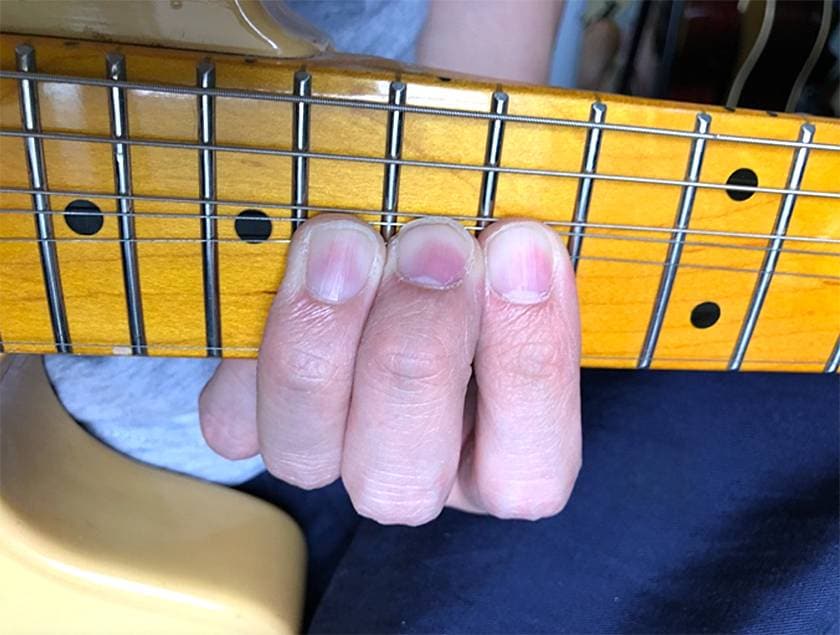
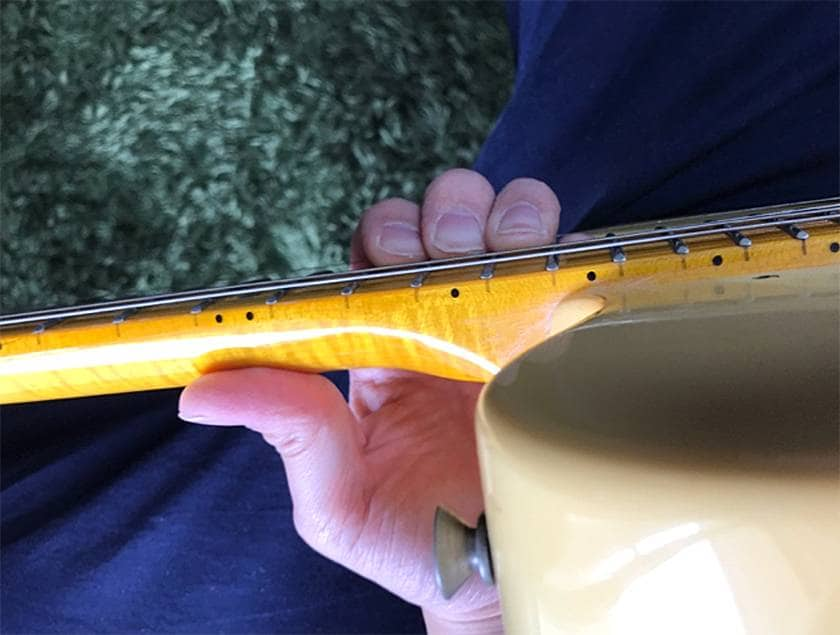
I'm sure everyone has their own form for bending, so I won't go into detail here.
Now, let's take a look at the muscles actually needed for the bending!
The muscles that play an important role here are the lumbricals.
It was mentioned in the previous "How to hold down F chords", but let's review it!
Please roughly learn the position and function of the lumbricals.
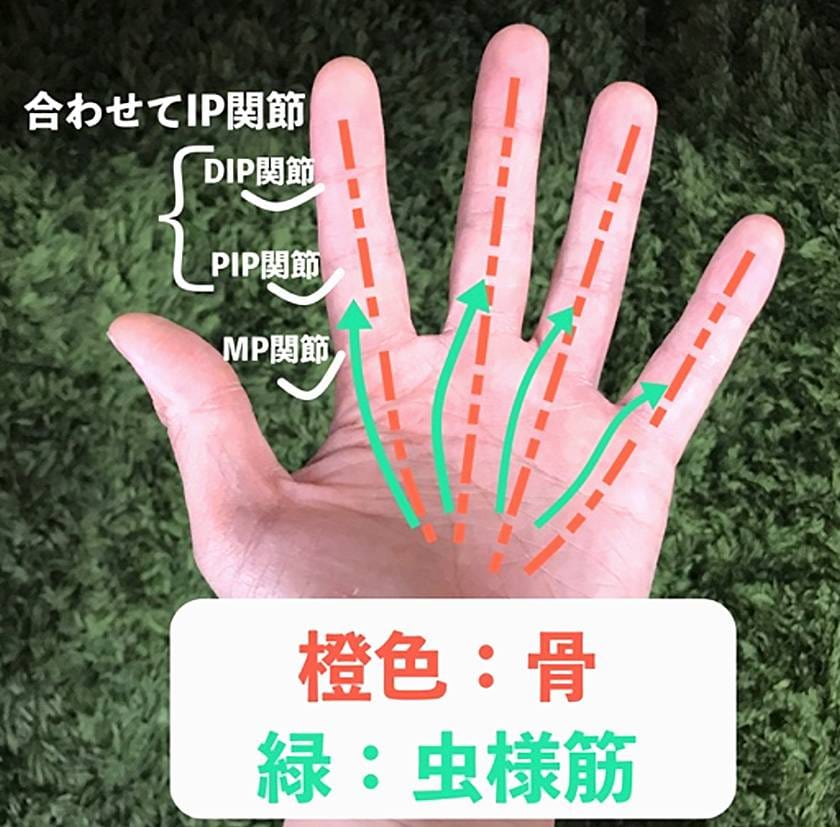
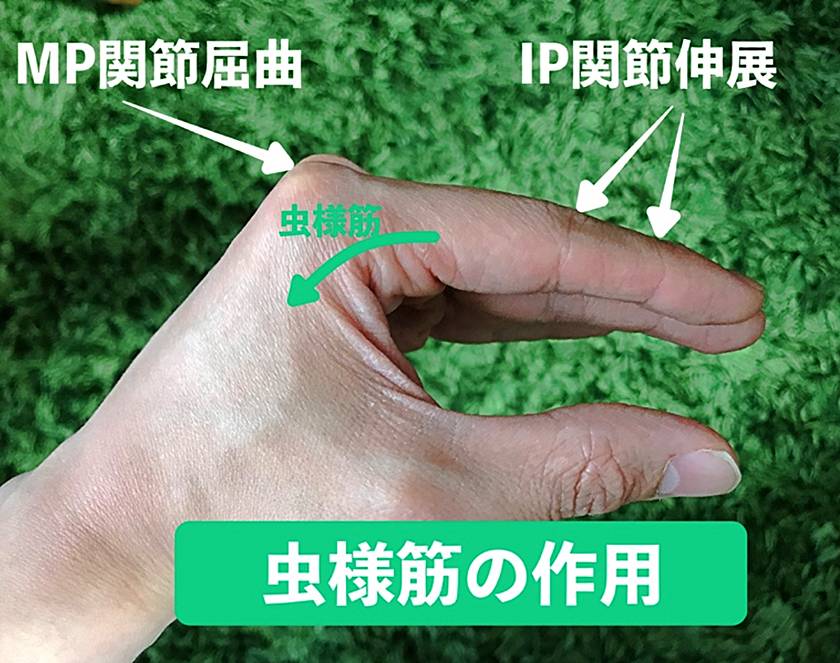
Lumbricals have the effect of flexing MP joints and extending IP joints.
In other words, they the function of bending the finger from the base and keeping the finger in a stretched state.
I think, while keeping your fingertips extended with this function, you can bend strings relatively easily by pushing up the bent strings from the base of your fingers.
However, it's a little difficult to bend strings only with the power of lumbricals.
That's where the wrist comes in! You need so-called "doorknob turn".
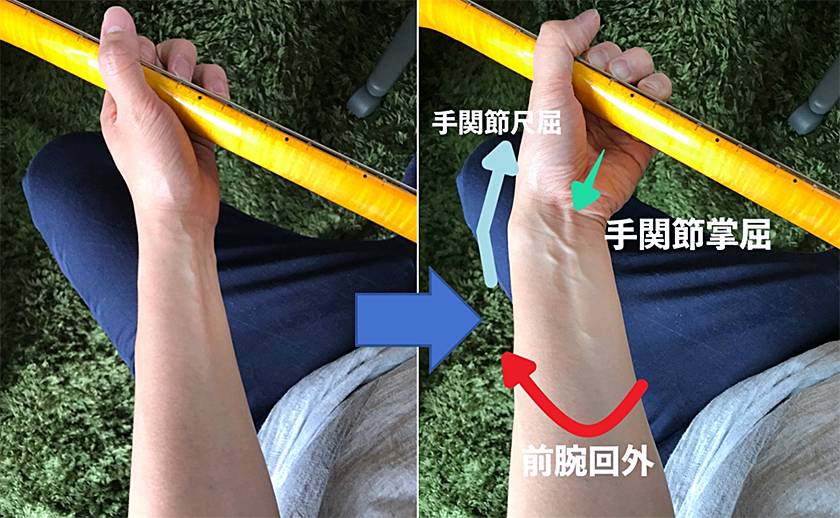
The picture on the left shows the arm before bending, and on the right, it shows the arm when bending.
Analyzing each movement, the forearm supination and palmar flexion/flexor carpi ulnaris of the wrist occur.
(Forearm supination = turn the arm outward
Wrist palmar flexion = bend the wrist toward the palm
Wrist flexor carpi ulnaris = bend the wrist toward the pinkie)
There are lots of unfamiliar words. Sorry it's so complicated.
The point is the diagonal movement that combines the flexor carpi ulnaris and palmar flexion.
The muscle used here is called "the flexor carpi ulnaris", which extends from the inside of the elbow to the wrist, and this muscle bends the wrist. This is a muscle that is used a lot for arm wrestling.
I think you can bend the strings very easily by using the force of bending your wrist like this!
About pain
Bending is a technique that tends to be done with strength, and at first the strings dig into your fingers and it hurts.
However, once you get a hard tip and get used to it, you can relieve unnecessary power and experience almost no pain.
If your fingertips hurt, probably you press the strings vertically against the frets (it's more like gripping).
It's a little difficult to understand in the picture, but in this way of pressing, your fingers may slip under the strings when bending them. The strings dig into fingertips, so it hurts a lot (tears).
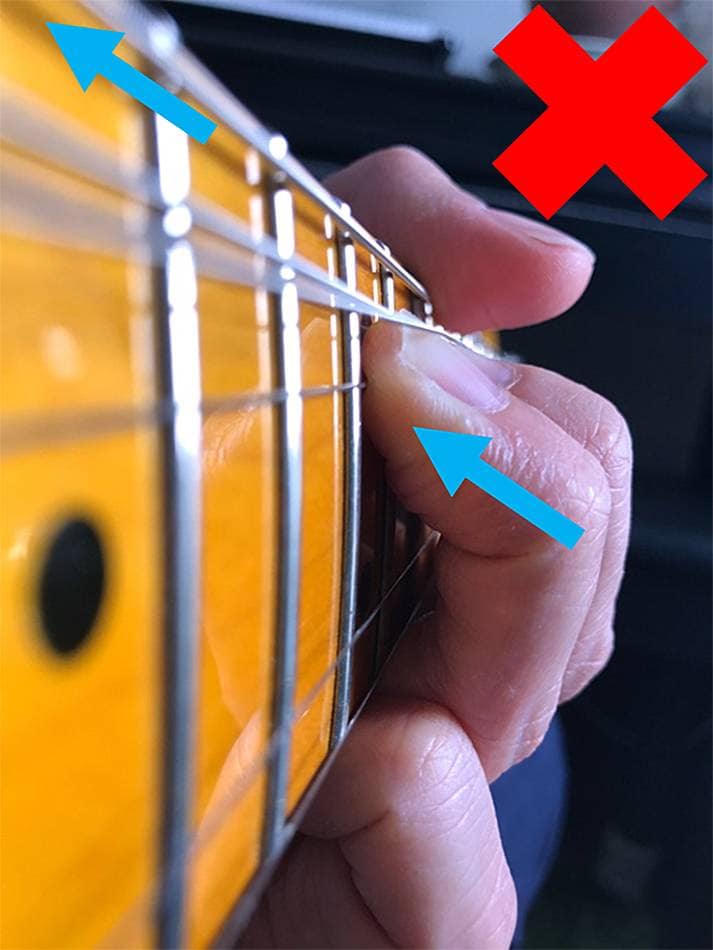
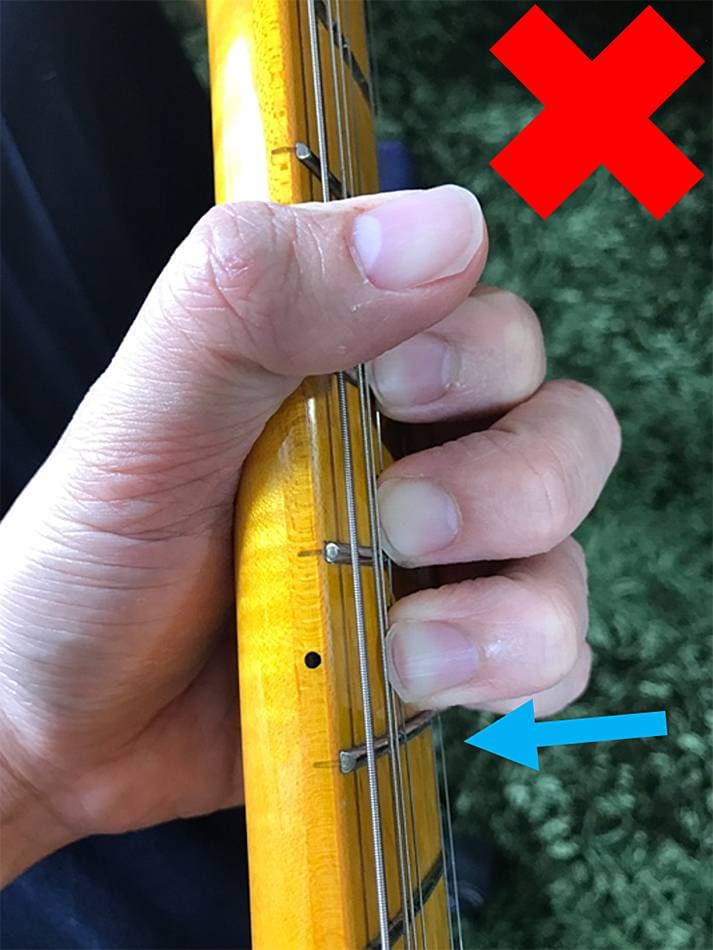
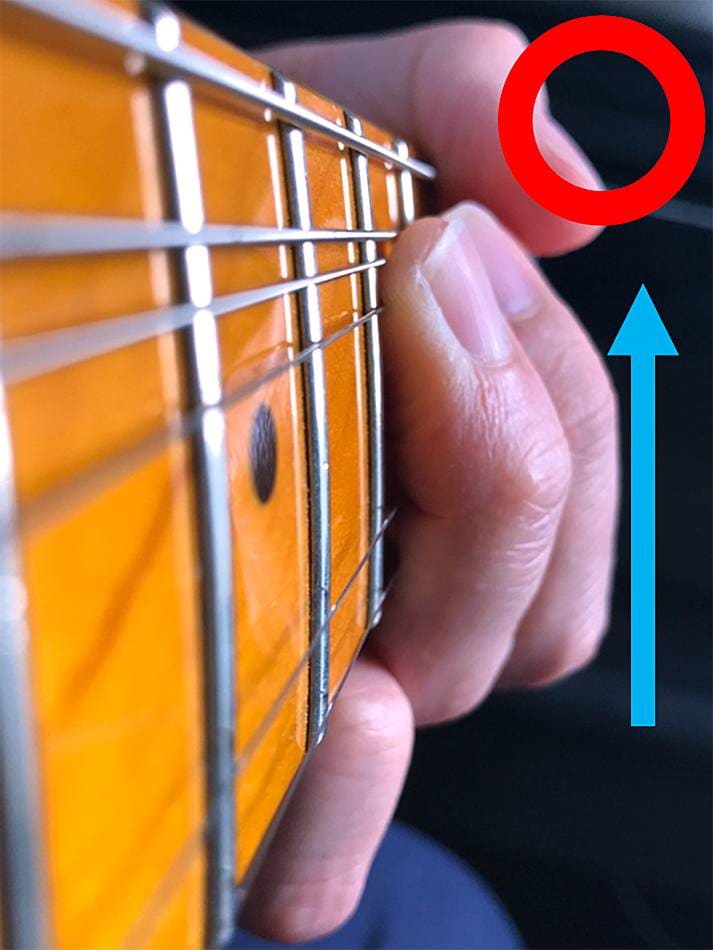
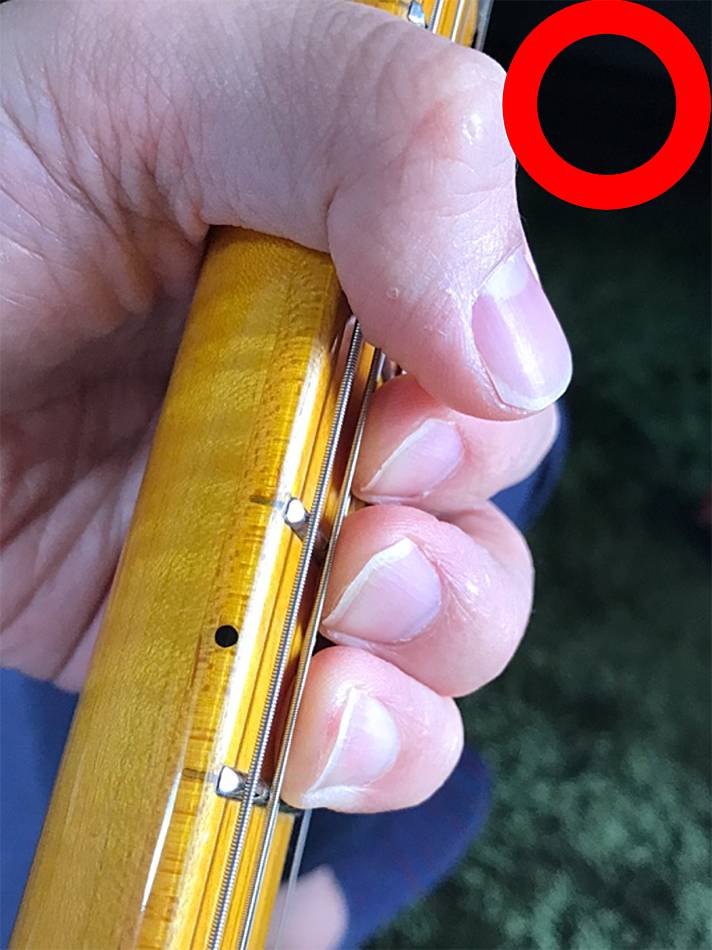
Can you see the difference?
For easier bending, it's important to be aware of the direction in which you extend your fingers (extension direction), not the direction in which you apply force (bending direction)!
As I said earlier, use MP flexion and IP extension, which are the functions of the lumbricals, and try bending by pushing up the strings from the base of your fingers while keeping your fingertips extended.
Also, you can avoid damage to your fingertips because you can naturally press down the strings with the pad of your finger. I think one way of considering bending is that it's like sliding fingers on the frets.
If you can bend strings without unnecessary force, the pitch will be stable and easy to attain.
Finally, an idea for playing comfortably on high fret bending is the positional relationship between the guitar and the arm.
Of course, as you get to the high frets, your arms get closer to your body.
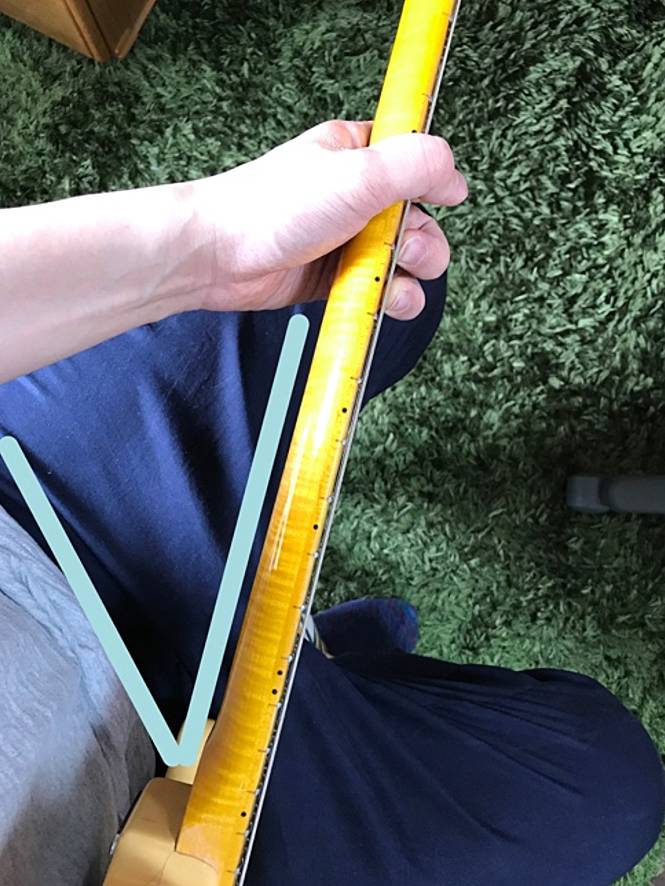
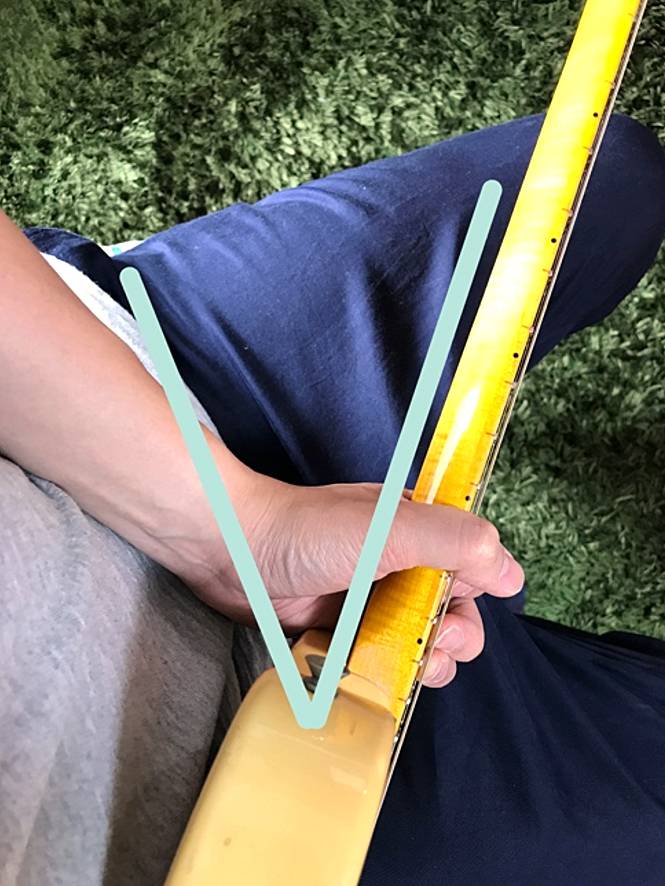
If this happens, the movement of the forearm and wrist will be interfered with, so playing will mainly rely on the movement of the fingertips.
Now, let's change the angle of the guitar a little.
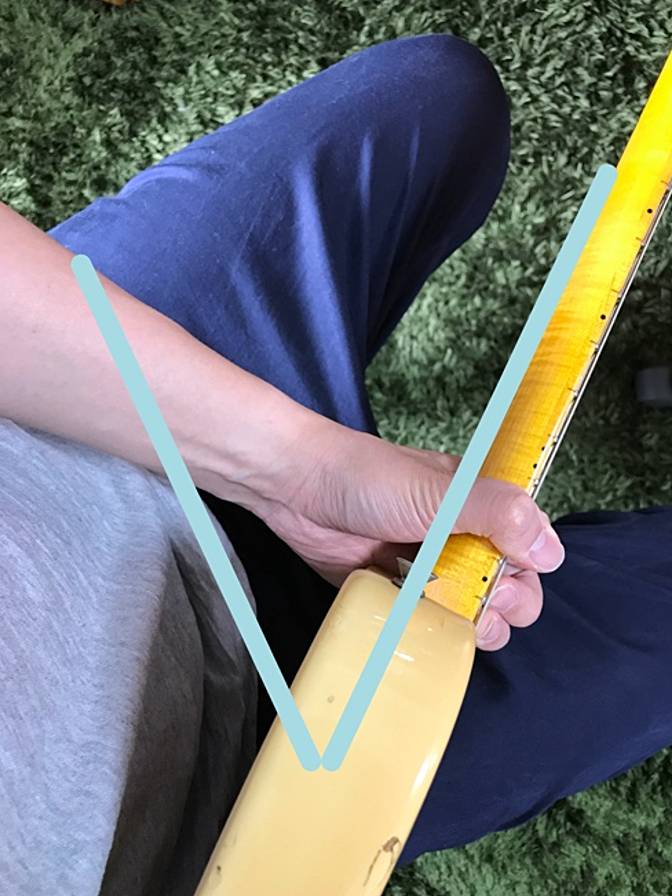
I moved the body so that the neck faces forward.
There's more space as the arms move away from your body, and it's easier to use the movement of your forearms and wrists!
It's a difficult task to find out what posture will allow you to play comfortably without burdening your body, but I think you can learn a lot by watching professional performances.
How was it!?
What I wrote here may look difficult, but it's worth knowing about the structure of our bodies, how they move, and how we move them.
Also, the method analyzed this time is not the only answer.
Please quickly learn the basic techniques of body use that suit you, and try it with various songs and performances!!
See you!


























